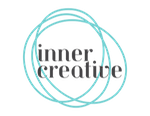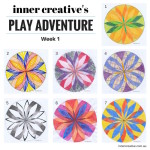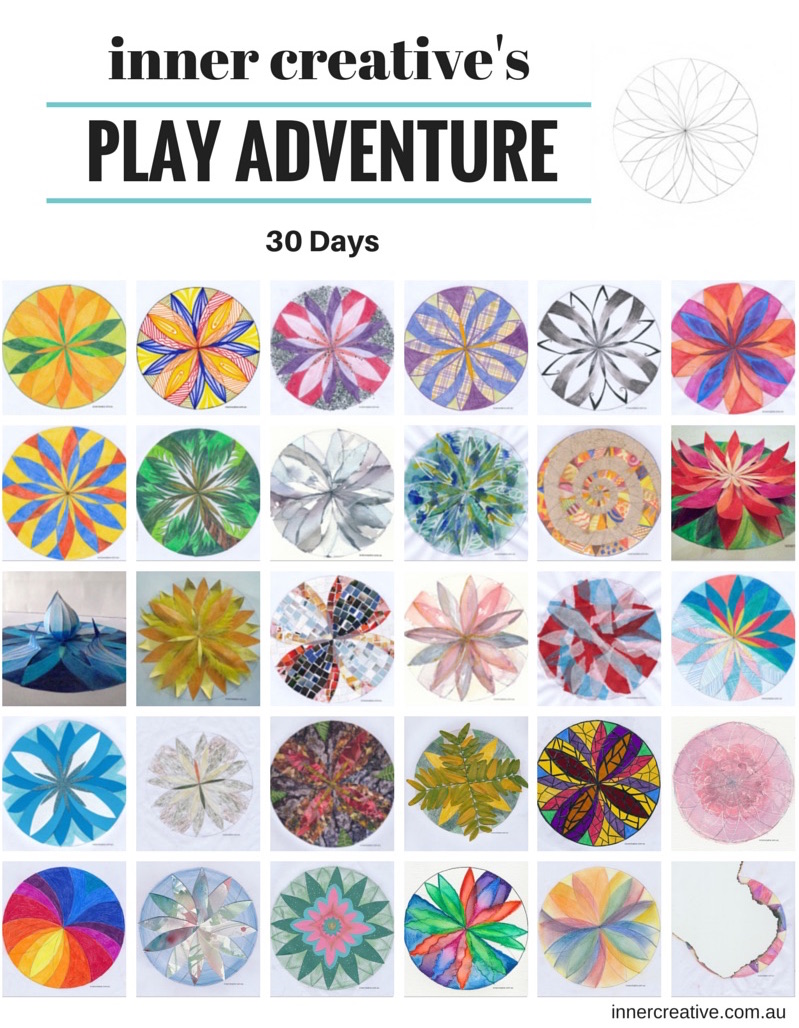
Going on a mandala Play Adventure was rewarding in so many ways. I got to introduce more play and fun into my day. I got to express myself creatively. I learnt more about the creative process and what worked for me. But the biggest takeaway was learning about the importance of developing a creative habit or practice: doing something creative on a regular basis and making it a normal part of my everyday life.
In the first week of my mandala Play Adventure, I wrote about the practical tips that helped me make time to create my mandalas each day. In this blog, I want to share the secret behind making a creative habit.
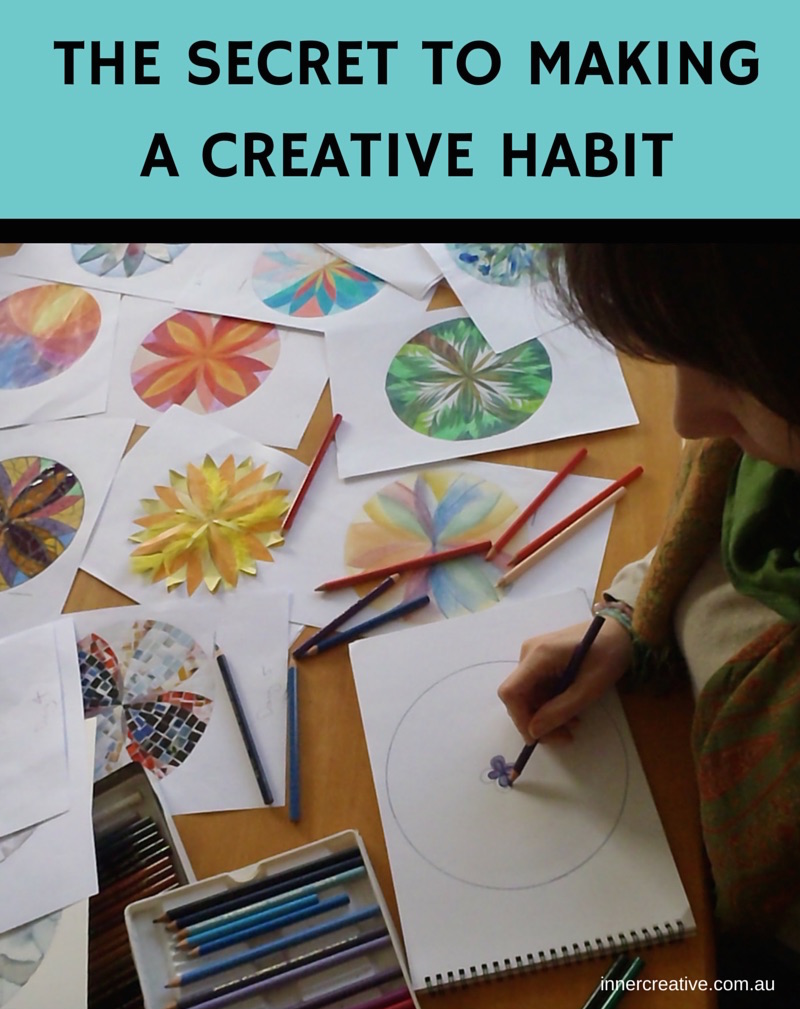
By creative habit, I mean that you are spending time on a specific creative project (like collating a photo book, colouring in a colouring book, or knitting a baby rug). It can also include what’s known as a creative practice, where you are developing a particular craft or skill over time, for example short story writing, watercolour painting, or hand carving wooden chess pieces.
So what’s the secret to making this happen?
In simple terms: you need to do the work.
You need to show up at the computer, the sewing machine, the canvas, the kitchen bench. Wherever you need to do the work, show up, and then start.
You need to do the work, put in the time and effort. You will not always be productive or produce your most creative results. But you can’t be creative without expressing it in some way.
To make a creative habit (or practice) it’s not enough to do something once. It’s not enough to knit one jumper, cook one meal, take one photo, or draw one sketch. You need to show up to your creative project time and time again.
So the two key elements to developing a creative practice or habit over time are: consistency and commitment.
Consistency means doing something regularly.
It’s hard to get much depth or substance without doing something regularly over a long term. If you’re doing something frequently, then it’s easier to return to where you left off and get into your previous train of thought or mind space. It also gets easier over time, as you build up your skill level and understand more about what you’re doing.
To build a creative habit it’s best to work on it every day. And, before you balk at the idea of fitting another thing into your already overloaded schedule (I get it. I really do.), it doesn’t have to be a large amount of time. You do not need to wake up an hour earlier each day to fit this in (unless you really want to 🙂 ). Carving out 10-15 minutes a day is all you need, and is way more realistic and achievable than expecting to allocate a whole hour on a Saturday or Sunday.
Doing something every day means that it is much easier to get yourself back onto the bandwagon if you miss working on your project for one day. And if 7 days a week still seems a bit too much, then I suggest working on your creative project for at least 5 days a week (sometimes it’s easier to fit in a regular practice time around your more scheduled weekdays if your weekend commitments keep changing week to week). The less days between you working on your project the easier it is to get into the habit of spending time on it.
Which brings us to the other important element of making a creativity habit – that is, commitment. It’s all about the attitude you have towards your creative project or practice – by honouring the importance of creativity in your life.
There will be days when you just don’t feel like doing the work. You’re not feeling well. It’s raining. The house needs cleaning. There are dishes to do. You’re really tired. You’re just feeling really unmotivated and uninspired. The list goes on and on.
That’s normal. And it’s OK. But you know what? You do the work anyway. You sit at that desk, head to the garage, go outside. You pick up that camera and take a shot. You sit at the computer and start writing. You show up and do the work.
Every time you pick yourself up and work, even when it feels hard to start or when you’ve skipped a session, the easier it is for you to overcome this resistance when it shows up again (as unfortunately, it will). Slowly you will build up a habit, a resilience – like a muscle, your resolve and commitment to do the work will get stronger.
When times get tough, you adopt what Stephen Pressfield in
Turning Pro calls the mindset of a pro (a professional). You show up and get the work done. As much as you’d like to press the snooze button, you get up each day, get dressed and head into work. You do the best that you can.
It might not always be your best work. But as
I’ve written previously about idea seeds, each time you work on and develop an idea it paves the way for another to form. The new idea might not come to you straight away. (Ideas are not always linear that way.) As Pablo Picasso says, “Inspiration exists, but it has to find you working.” Just start where you are and do what you can.
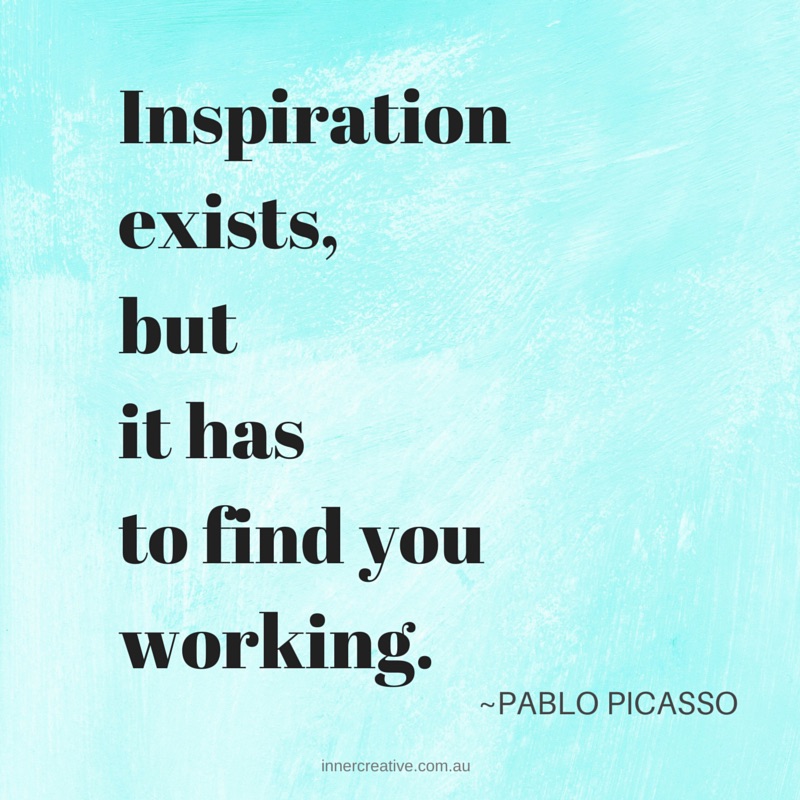
Over time you will see your ideas develop and your skills grow. Your creative voice, your uniqueness, will start to emerge and you will hear it with greater clarity –
so, this is what I do well, this is what I love doing, this is who I am.
Developing a creative habit or practice is slow. It takes time, and effort. In due course, your effort will reward you with moments of genius, insight or joy.
And remember, that this regular creative practice is to be spent doing things that you love and bring you joy. Not to say that it might always be easy. But on some level by spending this regular time on your creative project, you’re feeding yourself, your soul.
If it gets boring or uninspiring for more than a day or two, then try a different approach. Or do something else (follow what you’re genuinely interested in and you’re more likely to tap into your joy and creative spirit).
For instance, I really enjoyed delving into the world of mandalas for a month during my Play Adventure. When that finished I took Vivienne McMaster’s Be Your Own Beloved class and picked up my camera to take a different selfie each day for over a month (some of which I posted on Facebook). After that, I got back into writing for my blog and social media. And I’m currently toying with the idea of getting back to my art journalling practice.
So it doesn’t have to be the same thing day in day out. But obviously the more time you spend on a particular form of expression, the deeper the practice and the more you can grow your skill level.
Please don’t wait for inspiration to hit, to have that grandiose idea, before you spend time on your creative project. Just start and do the work. Please persist. Be consistent. Be committed. Do what you love and brings you joy, and see how your creative practice thrives.
So have you tried bringing a creative practice into your life? What helped you? Where did you stumble? Do you have any tips for starting a successful creative practice?
I’d love to know.
Please share your thoughts below.
Who else would appreciate reading this post? Share it with your friends or colleagues.





 Over time you will see your ideas develop and your skills grow. Your creative voice, your uniqueness, will start to emerge and you will hear it with greater clarity – so, this is what I do well, this is what I love doing, this is who I am.
Over time you will see your ideas develop and your skills grow. Your creative voice, your uniqueness, will start to emerge and you will hear it with greater clarity – so, this is what I do well, this is what I love doing, this is who I am.